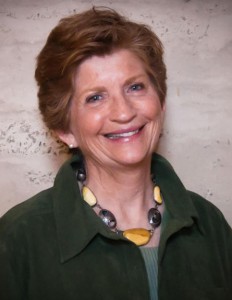 Ah, the budget. Everybody hates it. Or so they say.
Ah, the budget. Everybody hates it. Or so they say.
I used to, too, until I understood the degree of control (and peace of mind) that came with knowing exactly what was coming in and what was going out of my bank accounts. (And the appreciation began at a painful time for me, when the outflow was still much larger than the inflow!)
The women who work with me to get their money under control fall into two camps: either (1) they’re struggling seriously with out-of-balance outflow and inflow, where every cent counts; or (2) they have a respectable income but have some crazy spending patterns, usually as a result of some “money gremlins” left over from childhood.
The first group I call “Squeezing Blood Out of Stone.” How they got into this predicament varies drastically. It could be the result of a divorce or lost job that limits the inflow suddenly. Or a major medical condition that wipes out all savings and requires ongoing payments. Or it could be the accumulation of a long history of living beyond one’s means.
Whatever the cause, the first thing that has to change is a shift to total “open book” honesty. No hiding anything. It’s time for full examination of every single cent that flows in, and every single cent that flows out. Knowing that detailed information often requires a 30-day exercise of recording every expenditure, plus reviewing bank statements, credit card statements, and so forth.
Once that’s done, the next step is to enter all the information on a detailed statement, or budget, such as the one that I make available in an article entitled “Your Money Is Just Like the Wizard of Oz.” There you’ll find the link to a report called “Knowing Your Numbers: The First Step to Financial Security.” That’s my gift to you, and it tells you exactly how to proceed.
The second group I call “From Money Gremlins to Money Mastery.” First we identify what unhealthy money behaviors are at play, and work to identify what might be causing them. (More often than not, they are the result of childhood memories, real or imagined.) And then we work to get rid of them … and the negative money behaviors disappear as well.
The next step of bringing money under control is to create a budget that brings stability and peace of mind. But the question is: how much money should be allocated to each budget category? Women in this second group have income levels that vary widely, so it didn’t used to be easy to give a pat answer.
Today the formula I use is a brilliant one devised by Elizabeth Warren (a Harvard law professor with an expertise in personal bankruptcies) and her daughter, Amelia Warren Tyagi. It has two major benefits: (1) it works for incomes of all levels and (2) it allows you to live comfortably (albeit prudently) while building your financial security.
And it’s straightforward! It’s called the 50/30/20 Balanced Money Formula and divides your expense categories into just three: “must-haves,” “wants,” and “the rest.”
“Must-haves” get 50% of after-tax income. “Wants” get 30%. And the remaining 20% goes to savings and any debt repayment.
Let’s get into more detail.
First, let’s define “after-tax income.” It’s your gross pay, less any taxes related to your wages. These could include income tax withholdings, Social Security and Medicare taxes, state taxes, plus the alphabet soup of other disability/medical/other taxes. What you don’t subtract are any contributions taken from your paycheck for 401(k) contributions, health insurance premiums, and union dues, for example.
Next, you target your “must-haves” to take up no more than 50% of your after-tax income. These are all the things you’re contractually obligated to pay, such as child support or alimony, cell phones on term contracts, minimum payments on school or other loans, and credit-card minimums. Add to that all the living necessities: housing, food, transportation, utilities, insurance, and so forth. To help you discriminate between must-haves and wants, your child’s required school uniforms are a must-have; new casual clothes are wants. Having a land-line phone may be considered a must-have, but all the extra bells and whistles fall under wants.
Then tally up your “wants,” which shouldn’t add up to more than 30% of your after-tax income. How you spend this money depends on what brings you the most joy in life, and rewards you for all your efforts. After all, a girl’s gotta play! Everyone will have a different idea of what that means: traveling, dining out, gifts, bling, whatever. But there’s one cut-in-stone rule: you cannot exceed the 30% maximum. And if some kind of financial disaster hits, whether temporary or longer term, the wants are the first things to get cut.
Lastly, divvy up “the rest,” or 20% of your after-tax income, into savings and repaying any debts. In my article Five Things a Girl Can’t Live Without, among the five things are a “get-out-of-debt” plan, a retirement account, and an emergency fund. They’d come out of this part of the budget. To clarify, while the minimum payment on existing credit card debt comes out of your must-haves because it’s an obligation, any payment above that comes from here. But if you pay off your credit card each month (good for you!), that’s not debt. You’d just allocate each item to its rightful category (must-haves or needs).
Now here’s the challenge. This sounds simple. It’s more difficult than you think because of how our lifestyles have evolved over time. The hardest part will be getting your must-haves down to 50%. But in this era of economic turmoil and uncertainty, this is what brings the greatest flexibility and tranquility. By keeping the hard costs so low, in case of loss of income you can jettison all of the wants, savings, and debt repayment. That would let you survive much longer on unemployment and emergency funds.
So what’s my recommendation? First, guess what you think your percentages are.
Then sit down with paper and pencil this coming weekend. Figure out your percentages as precisely as you can, without great effort. If you’re out of balance, know that alignment is not something you can achieve overnight.
But give yourself the greatest gift known to (wo)man: promise yourself to get the percentages aligned within the next 12 months, come hell or high water. It’s your surest path to peace of mind.
Don’t forget to let me know in the comments section below what you think of this!
xxxxxxxxxx
 Bio: Sharon O’Day lost everything at age 53: her home, her business, everything. But how could that be? She’s an expert in global finance and marketing with an MBA from the Wharton School. She has worked with governments, corporations, and individuals … yes, she was the secret “weapon,” if you will, behind many individuals in high places. But yet she did! Since then, Sharon has interviewed countless women and done extensive research to understand how that could have happened, especially with her strong knowledge of numbers and finance.
Bio: Sharon O’Day lost everything at age 53: her home, her business, everything. But how could that be? She’s an expert in global finance and marketing with an MBA from the Wharton School. She has worked with governments, corporations, and individuals … yes, she was the secret “weapon,” if you will, behind many individuals in high places. But yet she did! Since then, Sharon has interviewed countless women and done extensive research to understand how that could have happened, especially with her strong knowledge of numbers and finance.
Today her mission is to show as many women as possible how to become financially free for the long term, through her “Over Fifty and Financially Free” coaching sessions. She has developed a step-by-step plan to get past all the obstacles that keep women broke and scared … and from reaching the financial peace of mind they so deserve.





